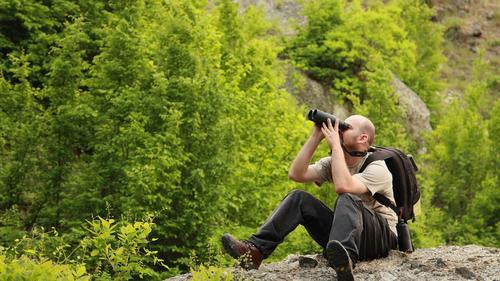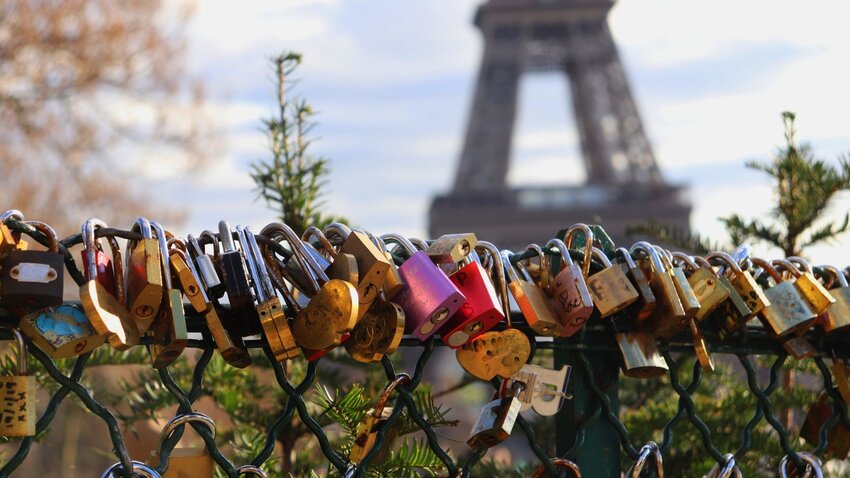With the strange state of the world, it’s often difficult to find moments of peace. Finding joy in familiar activities has become harder and harder as many states struggle to reopen. With uncertainty looming on the horizon--professionally, politically, and personally--I’ve found it increasingly necessary to search for hobbies I can safely do at home.
I recently moved into a new apartment that excitingly comes with its own private patio. From this sliver of private outdoor space, I’ve established my new favorite work-from-home hobby of bird watching, which has proved instrumental in maintaining my happiness and mental health. I’ve been spending countless hours each week gazing at and identifying the birds that swoop down in front of my window and perch in the crooked branches overhanging the patio stones.
Bird watching is an easy, affordable way to stay entertained while we’re largely sequestered in our homes for the foreseeable future. All you need are a few simple items and a reserve of patience, and this tantalizing hobby can become a beloved new routine.
Finding the Right Bird Watching Book
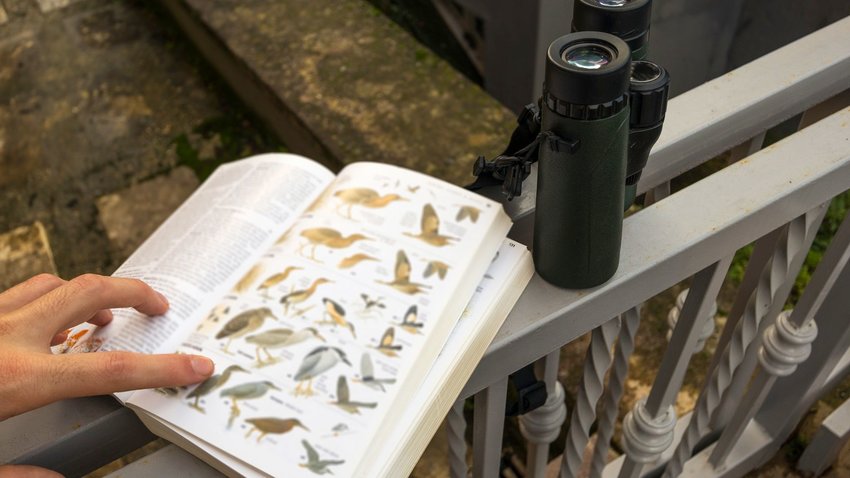
One of the best things about bird watching is that you can do it basically anywhere. Whether you have a backyard, a balcony, or a nature conservancy across the street, you can commit to this pastime right away. The initial investment is minimal; you’re only going to need to purchase two items to get started: a pair of binoculars and a bird ID card.
In essence, a bird ID card is just a laminated brochure detailing the most commonly observable species. I recommend the Sibley’s Backyard Birds for your specific region as one of the best options for a laminated identification card, since it’s easy to read and even easier to obtain. I purchased the version for Sibley’s Backyard Birds of the Northeast through Amazon, though versions are available for specific regions and specific states.
You can start to identify birds with your Sibley’s ID card and learn helpful facts about each species you encounter, but as your curiosity continues to grow--and it will--you’ll want to invest in a more detailed bird guide. For beginners, it’s advisable to purchase a bird book that arranges the species by color since this is the most easily identifiable trait. Sibley makes informational bird guides, but I chose to switch things up and purchased the National Audubon Society Field Guide to North American Birds: Eastern Region since I was already familiar with the title through my time as a bookseller at a local Barnes & Noble.
For those who are colorblind or visually impaired, bird watching is made accessible through the use of a birding app. The most popular option is Bird Song ID, which automatically recognizes a bird’s song and provides you with three suggestions as to which bird it may belong to. There are over 240 songs within the system’s archive, meaning you’ll be able to identify numerous birds in your area with the click of a button.
Binoculars are Essential
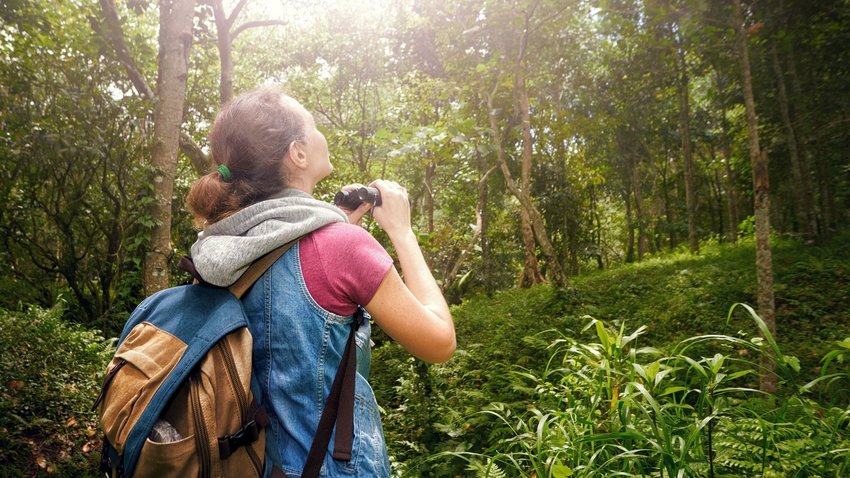
As far as binoculars go, this is entirely down to preference. Smaller binoculars are lighter and easier to handle, though they offer less magnification. Larger binoculars are heavier by design but they provide more magnification. I like the Tasco Essentials Roof Binoculars - 8x 42mm because they’re affordable at around $50, and lightweight.
As a general rule of thumb, each pair of binoculars is categorized based on two numbers. For example, a 10 x 50 specification means the binoculars magnify an object up to 10 times its original size and has a 50 millimeter objective lens. The objective lens essentially gathers light and makes the image you’re viewing clearer. The wider the objective lens, the better the image. If the 50 millimeter isn’t cutting it for you, go up to the next size and see how you fare.
It’s All About the Attitude
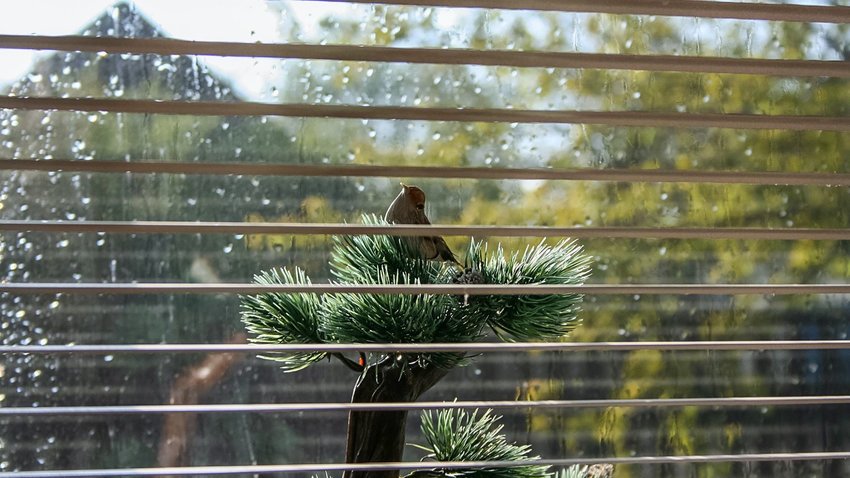
As someone who casually got into bird watching, I didn’t realize that my natural impatience was impacting my ability to engage with this hobby successfully. I’d sit outside on the patio for 15 minutes at a time and grow frustrated if I didn’t see a single bird in the trees. I had no idea how much patience, curiosity, and positivity was needed to bird watch recreationally. It’s not as simple as observing birds gliding through the air. It’s about growing more perceptive, and becoming attuned to patterns I didn’t know were there.
I really dove into the art of bird watching one afternoon when a family of gray jays descended on a tree at the edge of my patio. I thought at first I was seeing the same two gray jays over and over. But when I slowed down for a moment and drew my full attention to the movement in the leaves, I noticed it was a family of five birds, not two.
I pulled on my glasses and sat silently by the windowsill as the gray jays chirped and chased one another and dove into and out of my eyeline. I was completely transfixed, and it was this curiosity and stillness that allowed me to fully engage with the moment.
To fully engage with the moment is, in essence, the point of taking up bird watching to begin with. When you’re inundated with news, it can be hard to stay attuned to your immediate surroundings. By taking time to observe nature--even the little slice of nature visible through your home office window--you center yourself within the universe around you. When I feel detached from reality due to the stress of my everyday life, I head outside to stare into the trees to see what I can spot.
Adjust Accordingly
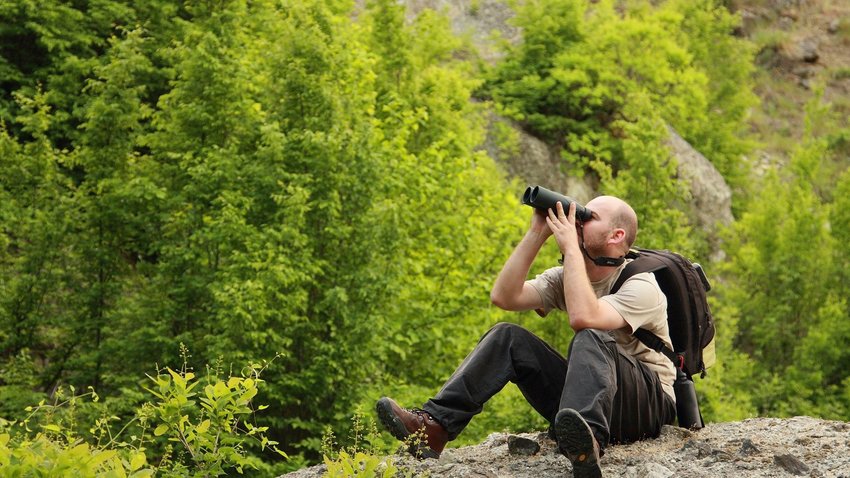
Once your passion for bird watching has grown as much as mine has, you’ll find yourself adjusting your schedule to ensure you’re up in time for the morning spectacular. Most birds sing and come out at dawn because they like the cooler weather and stiller air. Similarly, they tend to become more noticeable at dusk when temperatures drop. Set your alarm an hour or two early or head outside after dinner and watch the magic that unfolds through the lenses of your binoculars.
Take notes along the way to track which species you’ve identified and what times they’re most visible. So far, I’ve seen and identified gray jays, cardinals, blue jays, and robins from the comfort of my own home. The process of bird watching soothes my soul and gives me something to look forward to, and those are two things that are much needed as we continue to work from home indefinitely. If you really want to go all out, buy a bird feeder for your backyard or balcony, and watch the avian population grow by the day.

